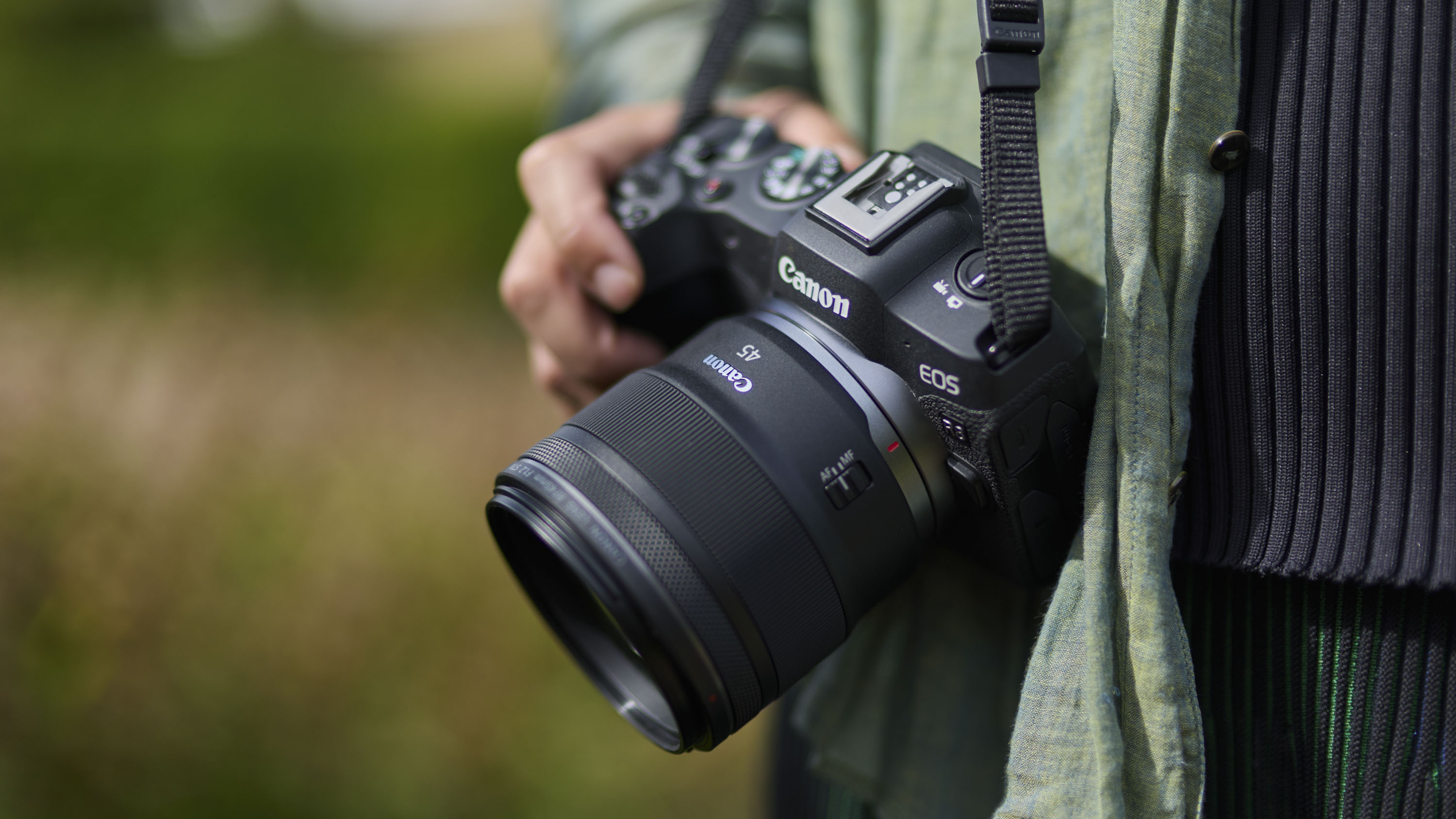- Canon unveils the affordable and lightweight RF 45mm F1.2 STM lens
- It's Canon's first-ever 'non-professional' f/1.2 prime lens
- It costs £479.99 (about $550 / AU$950), but the lens hood is an optional extra
An affordable, lightweight f/1.2 prime lens from Canon wasn't on my 2025 bingo card, but here we are looking at the new Canon RF 45mm F1.2 STM, announced today.
Designed for full-frame cameras, the RF 45mm F1.2 STM is Canon's first 'non-professional' f/1.2 autofocus lens and an ideal pairing with Canon's enthusiast full-frame cameras, such as the EOS R8 and the new EOS R6 Mark III – the latter was announced alongside the lens.
Usually, an f/1.2 prime is a pricey, weighty lens for pros, but Canon's surprising 45mm F1.2 STM is an altogether different creation: it's a lightweight every day carry at just 0.76lb / 346g, and it costs just £479.99 (about $550 / AU$950).
The 45mm focal length is much like the human perspective, and with its fast f/1.2 aperture and background-blurring potential, the 45mm F1.2 looks ideal for portraiture enthusiasts.
Surely there's a catch, I hear you say. Well, aside from the lens hood being an optional extra (£35.99, about $41 / AU$70), the optical quality clearly won't match the likes of the Canon RF 50mm F1.2L USM lens, which is over 5x the price.
Alongside the press release, Canon supplied me with some sample images taken with the lens, which give some indication of the kind of quality we can expect.

Where are the compromises, if any?
I haven't had my hands on the RF 45mm F1.2 STM lens yet, but Canon's range of sample images shot with the lens are quite revealing in terms of the kind of quality we can expect. I've included a variety below.
The flat lay of the food platter is taken at f/8, and the detail is impressively sharp across the frame, with only a slight softening in the corners. Detail is also pretty sharp in some images shot at f/1.2, such as the sliced lemon.
Background bokeh is smooth in that lemon photo, too. However, look closely at the shine of the lemon where it's out of focus, and you can see longitudinal chromatic aberration (bokeh fringing).
It's chromatic aberration that's the most obvious lens distortion I can see across the range of images supplied. For example, magenta fringing is plainly seen in the hair of the redheaded model, while there's green fringing in the out-of-focus trees in the photo of the lady crouched by a waterfront.

I'm hoping these sample images were taken with in-camera lens corrections turned off and no corrections applied in post, and that such distortions are easily corrected with a little editing.
Close focusing looks really limited, too – the specs say that the minimum 0.45m close focusing distance yields a maximum 0.13x magnification. This is no macro lens.
Even still, we shouldn't have unrealistic hopes for optical quality in what is a lightweight f/1.2 autofocus lens with an unmatched low price tag. Big respect to Canon – it has made this once-exclusive fast aperture with its desirable shallow depth-of-field effect available to more people, and I can't wait to try it out for myself to really see how good it is.
Usually, I would expect a lens with these specifications and price tag to come from a third-party Chinese brand, but this is a Canon lens, which, for me as TechRadar's Cameras Editor, is one of 2025's biggest surprises.
Follow TechRadar on Google News and add us as a preferred source to get our expert news, reviews, and opinion in your feeds. Make sure to click the Follow button!
And of course you can also follow TechRadar on TikTok for news, reviews, unboxings in video form, and get regular updates from us on WhatsApp too.















 English (US) ·
English (US) ·